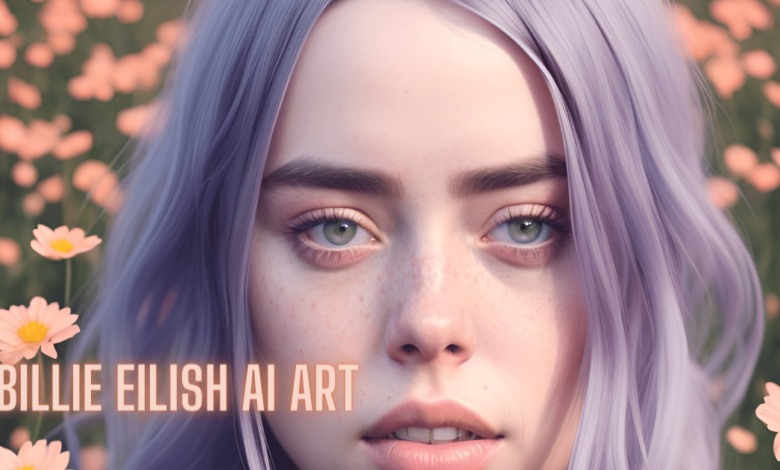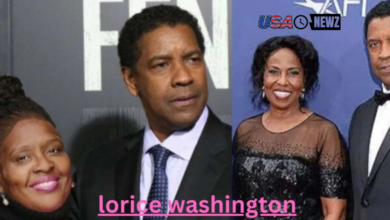Exploring Billie Eilish Ai images: A New Dimension of Digital Art

Introduction to Billie Eilish Ai Images Impact on the Music Industry
Eilish Ai images has taken the music world by storm with her unique sound and captivating visuals. But now, a new wave of creativity is emerging: Billie Eilish AI images. These digital creations transform how we perceive art, blending technology with artistry in fascinating ways. As fans and artists dive into this innovative realm, it’s clear that AI-generated imagery offers more than just eye-catching visuals; it raises questions about authenticity, creativity, and the future of art itself. Join us as we explore how these mesmerizing images impact Billie’s and the broader digital art and music culture landscape Eilish Ai images.
The Evolution of AI in Art and its Application in Billie Eilish Images

Eilish Ai images The journey of AI in art has been nothing short of revolutionary. Technology has transformed creative expression from simple algorithms generating patterns to complex neural networks creating lifelike images Eilish Ai images.
Billie Eilish serves as a compelling case study for this evolution. Her unique aesthetic complements the innovative spirit of AI-generated visuals. Artists have harnessed machine learning tools to create striking representations that echo her music’s emotiomusic’sth Eilish Ai images.
AI applications such as generative adversarial networks (GANs) allow artists to blend styles and experiment wildly with color palettes and textures. This fusion brings Billie’s persoBillie into a new realm, making it accessible through digital mediums Eilish Ai images.
As these technologies continue to develop, they inspire countless global creators. The intersection of Eilish’s art and cutting-edge digital techniques opens limitless avenues for exploration in visual storytelling Eilish Ai images.
Advancements in AI Technology and its Role in Creating Digital Art
Recent advancements in AI technology have revolutionized the world of digital art. Algorithms can now learn from vast datasets, enabling them to create images that evoke emotion and provoke thought Eilish Ai images.
Machine learning techniques allow artists to collaborate with AI. This synergy results in unique pieces that blend human creativity with computational power. Artists can input their styles, preferences, or themes and watch as the AI generates stunning visuals Eilish Ai images.
Moreover, tools like Generative Adversarial Networks (GANs) push boundaries further. These networks create lifelike representations by pitting two neural networks against each other, generating images while the other critiquing them.
The accessibility of these technologies has democratized art creation. Aspiring artists can experiment without needing extensive training or resources. This shift expands artistic possibilities and invites diverse voices into digital expression.
Exploring the Billie Eilish AI Images: Analysis and Interpretation
Billie Eilish’s AI images invite viewers into a mesmerizing world where technology meets artistry. Each image captures the essence of her persona, merging vibrant colors and abstract forms that evoke emotion.
The interplay of light and shadow in these artworks conveys depth. It’s as if theIt’swer can sense her music resonating through each pixel.
Furthermore, these creations often reflect themes in Eilish’s songs, such as her brilliance, rebellion, and introspection, which serve as visual metaphors for her lyrical narratives.
As fans engage with these pieces, they find new layers to explore. The AI-generated art challenges traditional interpretations of celebrity imagery by offering fresh perspectives on familiar subjects.
This dynamic fusion expands our understanding of Billie as an artist and the capabilities of digital expression today. As we delve deeper into this realm, unique insights emerge about identity and creativity in modern society.
The Controversy Surrounding AI-Generated Art and its Implications
The rise of AI-generated art has sparked heated debates within the creative community. Many artists express concern that algorithms could overshadow human creativity. The fear is palpable: will machines replace the emotional depth and personal touch intrinsic to traditional art forms?
Critics argue that AI lacks genuine inspiration or experience. They believe a program can mimic styles without understanding context or meaning, raising questions about authenticity and originality in artistic expression.
Conversely, supporters of AI-generated art suggest it as a new tool for creators rather than a replacement. They see potential for collaboration between humans and machines, opening doors to innovative possibilities.
Yet, legal implications loom large as well. Who owns an artwork created by an algorithm? These unresolved issues complicate the evolving landscape of digital artistry, making it essential to navigate carefully through this uncharted territory.
The Future of AI in Digital Art: Possibilities and Limitations
The evolution of AI in digital art opens up a world full of possibilities. Billie Eilish’s images serve as a prime example of this transformation. As technology advances, artists can push creative boundaries like never before.
AI tools offer new ways to visualize concepts and emotions. They invite collaboration between algorithms and human creativity, creating unique artistic expressions that challenge traditional norms.
However, the rise of AI-generated art raises questions about authenticity. What does it mean for an artwork to be “real”? Can fe “ling” captured by an algorithm resonate with us like those created by a human hand? These inquiries reflect broader concerns regarding ownership and copyright.
Moreover, while AI can enhance creativity, it limits individual expression if over-reliance occurs. The balance between using technology as a tool versus letting it dictate artistry is delicate yet crucial.
As we venture further into this digital landscape, the conversation around Billie Eilish’s AI images highlights both excitement and hesitation within the art community. Keeping these discussions alive will shape how future generations perceive and engage with digital art forms crafted through artificial intelligence.





